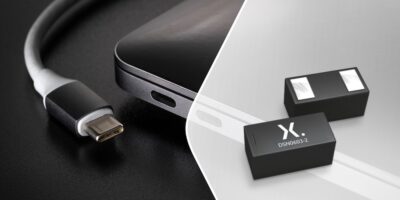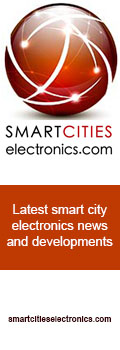Nexperia launches ESD protection diodes for USB4 and Thunderbolt
Nexperia has introduced a new series of five high-performance protection 1 V diodes that provide optimised protection for AC-coupled radio-frequency (RF) transmission lines against electrostatic discharge (ESD) events, surge currents and short circuit conditions. These diodes – examples include the PESD1V0C1BSF and PESD1V0H1BSF – are ideal for safeguarding USB4 and Thunderbolt interfaces found in various applications including cellular handsets, portable electronic devices, communication systems, as well as computers and other peripherals.
As data rates for USB4 and Thunderbolt interfaces exceed 10 GHz, ESD protection must deliver superior RF performance while effectively guarding sensitive ICs against ESD events and surge pulses, particularly those caused by potential short circuits between Vbus and TX/RX in non-compliant USB Type-C interfaces. The optimal choice of ESD protection device depends on the individual layout of the printed circuit board (PCB) layout. While boards with shorter traces between the transceiver IC and the protection device benefit from lower parasitic inductance, this has the unintended consequence of lowering overall system-level ESD robustness. On the other hand, boards with longer traces have fewer clamping issues (due to the increased inductance), but signal integrity issues can become a concern.
These diodes can protect USB4 and Thunderbolt interfaces against ESD events up to +/-18 kV while offering best-in-class surge robustness (up to Ipp= 9.6 A average). The ultra-low device capacitance (down to 0.1 pF) of these diodes, which are housed in Nexperia’s tiny leadless ultra-low inductance DSN0603-2 (SOD962-2) package, means they additionally benefit from minimal insertion losses (down to -0.21 dB @ 12.8 GHz) without any resonance up to 40 GHz.




